Old Polish radio - Unitra Sudety R-208 - interior, gallery, diagram
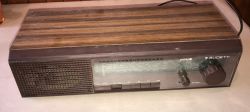 .
.Today another short presentation of an old Polish monophonic radio, this time Unitra Sudety R-208 produced by Dior from the years ca. 1987-1990. This radio offers AM and FM reception and sound recording to an external tape recorder, supports the ranges of long wave (148.5-283.5 kHz), medium wave (526.5-1606.5 kHz), short wave (5.95-9.9 MHz and 11.65-21.85 MHz) and FM (65.5-74 MHz). Detailed sensitivity, power and power supply parameters can be found in the original manual attached to the subject.
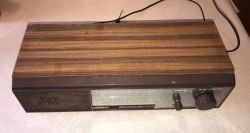 .
.First, let's take a look at the front end, which houses the bare minimum of functionality, namely the on/off switch, D, S, K1, K2, U band selection, tuning and volume control.
 .
.In addition, when tuning, we have red illumination of the ranges:

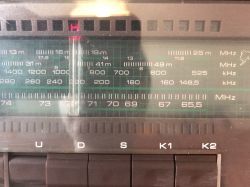
 .
.Small video, impressive for the time:
A glimpse of the rear, connector for aerial, cassette slot, for recording only:
 .
.Looking inside:
 .
.Doesn't look too bad, but there is a broken tuning string:
 .
.You can then release the catches and slide out the front panel including the PCB:
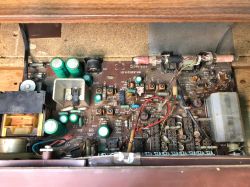 .
.Let's take a look at the PCB. This design is characterised by the presence of a switch on the secondary side only. Here in the picture the fuses.
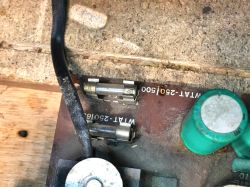 .
.UL1481, audio amplifier:
 .
.UL1211, audio amplifier including two AM/FM amplifiers with AM detector, FM amplifier with limiter and voltage stabiliser:
 .
.Ferrite antenna, BF194, BF195 transistors:
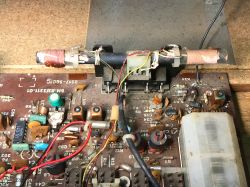 .
.Tuning capacitor, isostats:
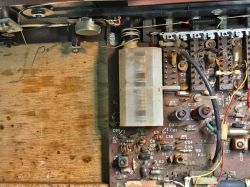
Tonsil loudspeaker 1,5 W, 8 Ω, Made In Poland:
 .
.Elwa electrolytic capacitors:
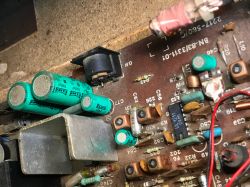 .
.A few more pics of the PCB:
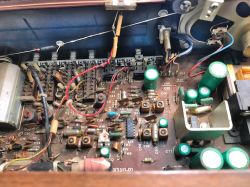

Schematic:
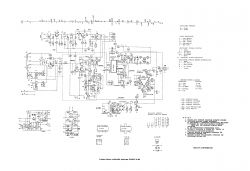
Instructions with specifications:

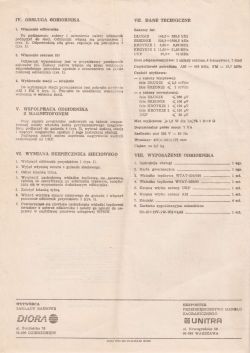
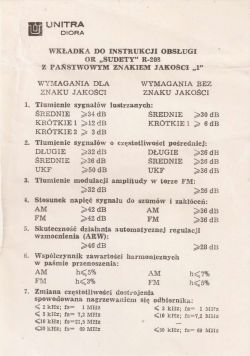
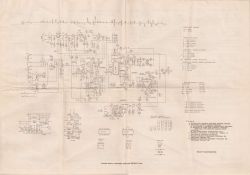 .
.Summary .
Another short gallery, perhaps of interest to someone. The receiver itself electrically almost identical to previous versions of the R-206 and R-207, at least one of which has also already been featured on the forum. To listen more in our time it requires tuning, although the cabinet will decorate even without that.
That's it from my side, feel free to share photos of your receivers, maybe someone will show his collection? .



Comments
Once when I was at the DW Syrena green school in Mielno (this was around 2006) there were Sudeten radios in the rooms, but with a dual band UKF head. Upper UKF full up to 108 MHz. Maybe it was an export... [Read more]
. A very interesting presentation. I hope that there will be more of them. And maybe I will be tempted to make a presentation of my collections too. :) [Read more]
I think it's good that the electronics inside this radio were also used in the Snowbird R-207? Yes looking at the pictures from both subjects. https://www.elektroda.pl/rtvforum/viewtopic.php?p=18949007#18949007 Greetings,... [Read more]
I have such a radio. The condition is, shall we say, sufficient. I was getting ready to have it tuned and restored. Then selling it. [Read more]
Such de-tuned and tuned how much might it be worth? [Read more]
. In my opinion, these are rather meaningless next letters from the alphabet. Such a fiddly thing, like the mass-mounted blue LEDs in mini-towers twenty years later. [Read more]
Very cool presentation. But I would call the tuning string the scale drive cable :) . [Read more]
Leaguer pads are generally not worth much. ~£100 after a quick browse through the auctions. And they are unlikely to ever shoot up in price, because they were made a lot of them and they don't stand... [Read more]
The subject of tuning is familiar to me, whereas more work needs to be done to do it right. After years the p.cz. needs correcting and also recaping small electrolytes required. And I guess the value... [Read more]
All in all, the most interesting thing about this radio is the nice scale with a drawn map and the red letters indicating the location. Quite an impressive gadget for such an archaic receiver. It looks... [Read more]
These and similar radios are so far plentiful on the market. Maybe one day they will be worth some reasonable price. I myself have one tuned up on the kitchen cupboard. I switch it on from time to ti... [Read more]
And how tuned? According to the art, or just the head. As I mentioned earlier, to do it correctly the time investment is quite considerable. The question is whether it is worth it. Obviously it is not... [Read more]
Restoring the brilliance of such receivers is extremely satisfying. The disadvantage, however, is their size and weight. The collection takes up a lot of space. I myself own several pieces, playing, in... [Read more]
I haven't seen anything like this, while breaking out (cutting out) is one of the suggested methods. I personally don't like it somehow, so I gouge the head out and replace what I need. Sometimes several... [Read more]
I always enjoy looking at good old analogue electronics. I'm always reminded of my youth when I used to mess around with such equipment. [Read more]